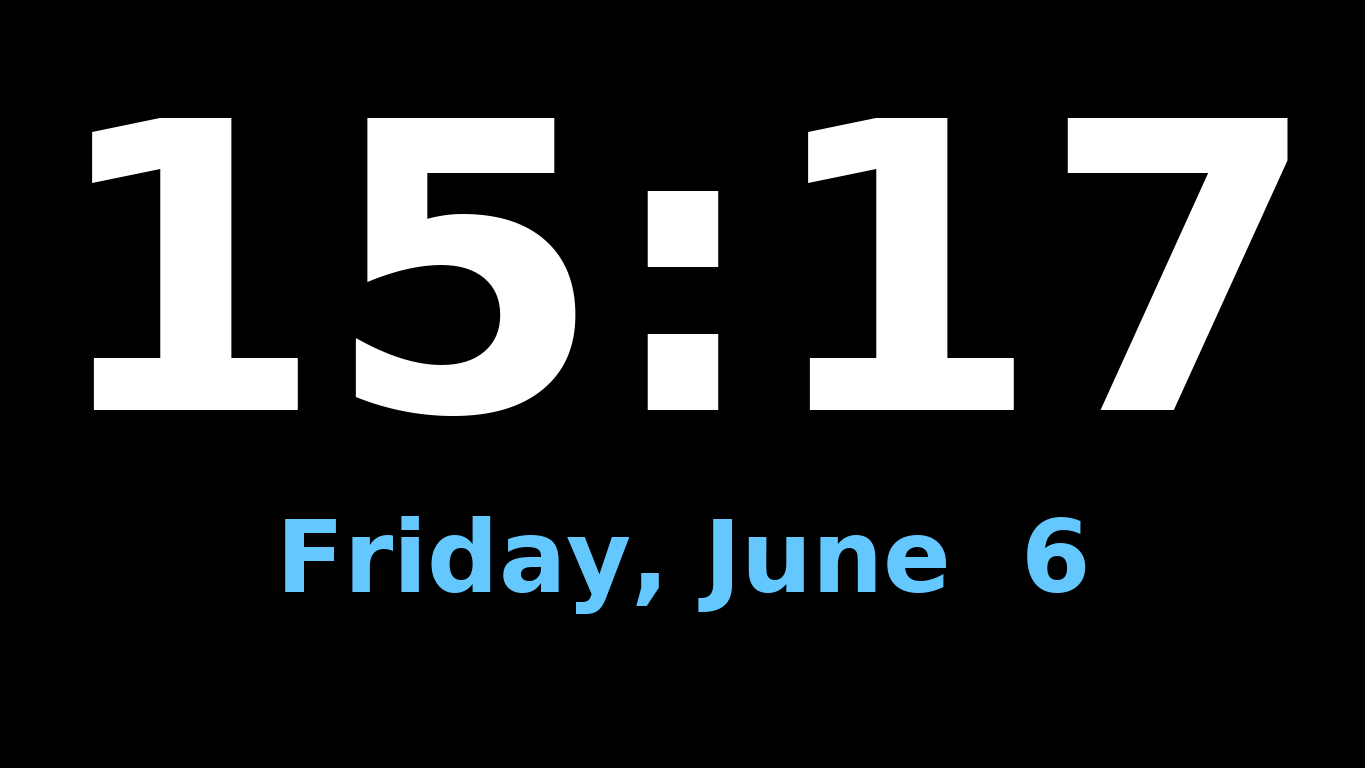This project was inspired by Nayuki’s excellent Full screen clock written in JavaScript. I used that version for a long time, but eventually I wanted to tweak a few things — like adding the date below the time and flipping the screen to show a mirror image.
So, I wrote my own fullscreen clock in JavaScript, using Nayuki’s as a reference and starting point.
That version worked well, but I was never quite satisfied with the fact that it had to run in a browser window. I wanted a standalone desktop application — clean, minimal, and fullscreen with no window decorations. So I rewrote it in C, with the help of AI, using the SDL2 library. I’m quite happy with the result.
Features
- Fullscreen with no window decorations (no border, title bar, or close button): Ideal for distraction-free display.
- Large, clear time display: Uses 24-hour format (HH:MM).
- Date display below the time: e.g., “Saturday, April 5”.
- Mirror mode: Press
[Space]to flip the screen horizontally. - Quit easily:
Press
[Esc]or[Q]to exit (important since the window has no close button).
Why Mirror Mode?
When I’m relaxing in my recliner, I often set my laptop on a table beside me. From that angle, I can see the screen’s reflection in the glass doors of the cabinet below the TV.
By flipping the clock display into mirror mode, I can read the time clearly in that reflection. It’s a quirky but genuinely useful feature — and one I use often.
Input Lag (and why it happens)
The clock updates once per second.
After drawing the time and date,
the program calls SDL_Delay(1000),
which pauses execution for one second to reduce CPU usage.
This means it also only checks for keyboard input once per second
—
which can make it feel slightly unresponsive when you press a key.
